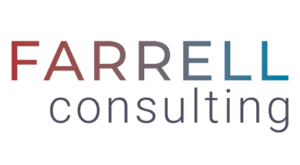Strategic Action: 7 Steps to Move from Strategic Planning to Strategic Action
Note: this is a four-part series. Read Part 1 | Part 3 | Part 4
by Patrick Farrell and Katherine Sanders
INTRODUCTION
How often do organizations spend the time and resources to develop a strategic plan, only to fail to operationalize it?
Our hopes and dreams in our Strategic Plan are so big that many times we’re not sure where or how to start. That uncertainty tends to make us fall back on what we already know how to do, and that’s probably not going to make the big ideas happen.
STRATEGIC PLAN VS. STRATEGIC ACTION
We use the phrase strategic action because we:
- carefully select a couple ideas from our strategic plan to implement first, and
- focus on doing; knowing this is only the beginning of implementing our big ideas, we select a piece that we already know how to do. We will be learning to do what we don’t know how to do as we go, but early on it’s more important to move, than to be brilliant.
We need strategic selection and action for successful implementation. They are also important for building change capacity.
WHAT DOES STRATEGIC ACTION LOOK LIKE?
- Select 2 to 3 projects that are recognizably connected to the plan’s big ideas and that we feel confident we know how to do now.
- Think about what success looks like for each of these projects. If we are successful, what will the entire organization see over the next 1 to 2 years?
- Commit the resources (i.e., people, time, money, etc.) to fully support these initial efforts.
- Create a communication plan to engage your people in steps 1-3. These conversations help the community give input into the proposed starting projects and understand how these smaller projects are related to the larger plan’s goals.
- After the starting projects have been identified, find a senior leader to lead each project. (If the Strategic Plan is well suited to the organization—it proposes to take your organization where most want to go—finding these leaders shouldn’t be too hard.)
- Engage the community frequently about progress: successes, stumbles, and any necessary re-direction. When the community can give feedback, we build trust in the overall plan and leadership’s ability to implement.
- Check in at the end of year 1 to start identifying the next round of feasible projects and repeat steps 1-6. There is no need to wait until these projects are completed before starting the next iteration. We can expect that the next round will be more ambitious and use what we have learned.
Starting with smaller parts of the big ideas helps your people develop skills while taking action. For example, even the first step, “Select 2 to 3 projects from the original plan…” has within it the challenges of setting priorities. Group members learn how to deal with disappointment when a favorite idea is not a consensus selection, yet join in the work anyway.
We develop trust by keeping promises. “We’ll come back to that,” means that we will circle back to that project when it is more feasible. If your people see that happen, they will believe it next time.
There is so much we can and will learn through strategic action that can’t be learned by planning. Ultimately, the foundation for accomplishing the most exciting parts of any strategic plan are active: learning and doing. So start now.
FOR MORE INFORMATION
Sanders Consulting and Farrell Consulting specialize in helping teams implement change in higher education.





Leave a Reply
Want to join the discussion?Feel free to contribute!